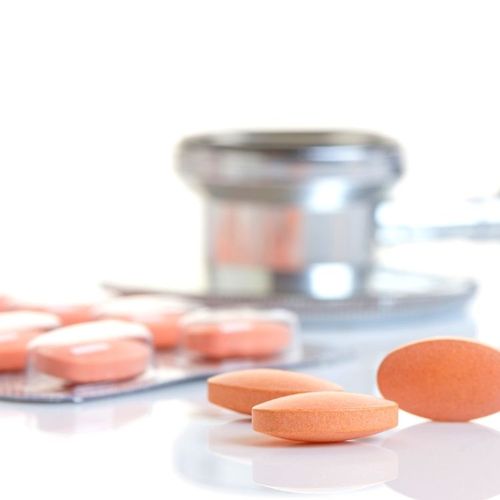In the fight against heart disease, statin drugs I are heavy artillery. Their cholesterol-lowering power has the potential to reduce heart disease, stroke and cardiac death by 25%.
Yet these medications are not for everyone. In two recent surveys, both published in The Journal of the American Medical Association, 60% to 75% of 100,000 people who started taking statins said they discontinued them within an average of eight months.
What goes wrong? If a patient has no insurance, cost is a factor-a month's supply of some statins exceeds $300. More often, people discontinue this medication because of side effects, which are largely avoidable-if the drugs are prescribed properly.
Statin Side Effects
To reduce cholesterol levels, statins alter liver metabolism. Cholesterol is manufactured in the liver, and statins inhibit an enzyme that is needed for cholesterol production. These drugs also prevent the inflammation that lodges cholesterol deposits inside arteries.
Although statins have fewer side effects than other cholesterol-lowering drugs, an estimated 75% to 30% of the people taking them experience abdominal discomfort, muscle or joint pain, muscle weakness and/or memory problems.
More serious side effects occur in 1% to 2% of statin users, whose liver enzymes rise-a warning of possible liver damage if uncorrected. Rhabdomyolysis, a breakdown of muscle tissue, is an extremely rare side effect but can be fatal. Approximately one in 2,000long-term (more than five years) statin users develops a painful nerve condition known as peripheral neuropathy.
These adverse effects-both uncomfortable and dangerous-are dosage-related. The more powerful the statin and the greater the dosage, the greater the risk.
Side effects can be minimized, if not avoided altogether, by taking the lowest effective dosage.
More Isn't Better
Many people are getting excessive doses of statins because of the way the FDA assesses new drugs for approval. To gain FDA approval, a drug manufacturer must show that its medication works for the majority of people who take it. Therefore, manufacturers design clinical trials using dosages that are high enough to meet that benchmark.
However, people respond very differently to medication. Women may need less of a particular drug than men, and people who weigh less often don't need as much as those who weigh more. Older people often respond to lower dosages. And some people need less-or more-just because everyone's biochemistry is different.
Result: Many people could do well on far less than the "recommended" dosage that was proven to be most effective in clinical trials.
What's more, not everyone needs the same amount of cholesterol reduction.
Precision Prescribing
The key question when your doctor prescribes a statin is, how much cholesterol reduction do you need? Depending on your risk for heart disease, aggressive treatment using statins may-or may not-be a good idea.
To determine your optimum cholesterol level, check with your doctor. National Institutes of Health guidelines advise LDL (,bad,) cholesterol levels of 100 to 160, depending on cardiovascular risk factors, such as family history of heart disease, age, if your HDL ('good,) cholesterol is higher than 40 mg/dL, etc.
Regardless of your LDL level, it makes sense to incorporate lifestyle changes. A diet that is low in saturated fats (700/o or less of total calories) and high in fruits and vegetables (at least nine daily servings) and whole grains can often lower cholesterol as much as a moderately powerful statin. Regular exercise also helps. Walking 45 minutes per day reduces cardiac mortality by 50%. And if you do go on medication, a healthy diet and regular exercise will enable you to use a lower dosage.
To ensure that you're being prescribed the appropriate amount of medication, ask your doctor what percentage of LDL cholesterol reduction you need. Then you and your doctor can determine what statin dosage is best for you.
Example: Your LDL cholesterol is 165, and your target is 130 (a 21% reduction). A daily 10- milligram (mg) dose of lovastatin (Mevacor) or pravastatin (Pravachol) is a good place to start.
After one month, have your cholesterol tested again. If it hasn't dropped enough, you may need to increase the dosage. Or, if it has dropped to desired levels, particularly if you also have made dietary changes, you may be able to decrease the dosage.
This approach can identify your lowest effective dosage and minimize side effects.
Which Statin?
All statins work the same way, so the key difference among them is potency. LDL reductions of 50% to 60% are possible using atorvastatin (Lipitor) and simvastatin (Zocor), compared with an average reduction of approximately 40% using older statins, such as lovastatin, pravastatin and fluvastatin (Lescol).
Rosuvastatin (Crestor) is the newest, strongest and riskiest statin. There have been reports of rhabdomyolysis, kidney damage and kidney failure in some patients taking this drug. I recommend it only if no other drug lowers cholesterol adequately.
If you need a significant reduction in cholesterol, particularly if you already have heart disease or risk factors, one of the high-potency statins makes sense.
For a more modest reduction, you may consider an older, less powerful drug. Lovastatin is a particularly attractive choice if cost is a factor-it is the only statin available in generic form and costs up to four times less than the other statins.
